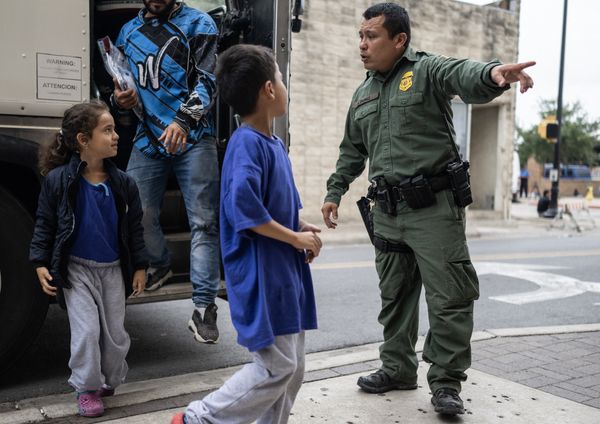
When a panel of experts read aloud some of the harrowing accounts they had collected from recently discovered victims of child sex abuse in the Portuguese Catholic Church, the country’s senior bishops squirmed in the auditorium's front-row seats.
During a live television broadcast, the experts reported in February that at least 4,815 boys and girls had been abused since 1950, most aged 10-14.
Before the stunning findings, senior Portuguese church officials had maintained there had been only a handful of cases of clergy sex abuse. They lost even more credibility with a response so clumsy and hesitant that victims were inspired to form Portugal's first survivor advocacy group to press for compensation.
Pope Francis will wade into the quagmire of Portugal’s reckoning with its legacy of clergy abuse and cover-up when he arrives in Lisbon next Wednesday to participate in World Youth Day, the international Catholic youth rally. While there is no mention of the scandal on the pontiff’s official agenda, he is expected to meet with victims during his visit.
Francis will also visit the shrine at Fatima, a rural Portuguese town that is one of the Catholic Church’s most popular pilgrimage destinations. In 1917, three Portuguese shepherd children reported seeing visions of the Virgin Mary above a tree there, a singular event of 20th century church history.
Antonio Grosso, who says he was sexually abused at a former religious shelter for boys in Fatima in the 1960s, chafes at the contrast in the church’s approach.
Church officials “don’t believe what victims tell them, but they do believe little children who say they’ve been listening to the lady above (a tree),” the 70-year-old retired bank employee says.
Portugal is the latest country to confront decades of abuse by priests and cover-ups by bishops and religious superiors. Yet Portuguese church leaders seem to have learned little from their fellow bishops in the U.S., Europe and Latin America who faced similar crises.
Since the report’s release, the Portuguese hierarchy has flip-flopped over the possible – and still unresolved — issue of payment of reparations to victims. It has balked at suspending active members of the clergy named in the report.
Anne Barrett Doyle of BishopAccountability.org, a U.S. group that maintains an online archive on abuse in the Catholic Church, said Portugal's bishops had expected the independent commission would help them restore trust by revealing the history of abuse and cover-up while allowing them to “apologize, give assurances of reform, and move on.”
“Their plan backfired terribly,” she said in an email. "With its finding of nearly 5,000 victims and its startling claim of accused priests still in ministry, the commission turned out to be more independent than the bishops bargained for ... It was a disastrous miscalculation.”
With the shocking results, church authorities at first argued that possible reparations were a matter for the courts, which in Portugal are backlogged and notoriously slow to reach decisions, often taking many years. Lisbon Cardinal Manuel Clemente said the church would do only what courts determined it must do.
“Everything that can be done in accordance with the law will be done according to the law,” Clemente explained. “But don’t expect us to do anything else, because we can’t do anything else.”
He and other officials also remarked that under Portuguese law, the perpetrator is liable for any compensation payments — not the institution to which that person belongs.
Clemente said it would be “insulting” to offer reparations to victims. Furthermore, he and other church officials claimed that none of the victims in an online questionnaire created by the commission of experts said they were seeking reparations. The commission told The Associated Press that’s not true.
By April, the church had softened its position, saying it didn’t rule out reparations. It promised to “make help available” for victims and said if convicted perpetrators couldn’t pay, the church would. Officials have not elaborated on those plans.
Clemente also claimed the Independent Committee for the Study of Child Abuse in the Catholic Church, a group of experts set up by Portuguese church authorities, had handed the church just a list of names of alleged abusers that was not backed up by factual evidence.
That comment irked the experts, who said they took pains to ground their findings and provide supporting documentation, including witness statements admissible in court.
Also, church authorities said active clergy named as alleged abusers could be suspended from their duties only after due legal process where they could present their defense, presumably in a courtroom. Officials, under public pressure, later suspended four of the two dozen priests identified in the report.
The church promised last March to build a memorial to the victims that would be unveiled during the World Youth Day celebrations. A few weeks before the pope’s arrival, in another embarrassment, it scrapped that plan and said vaguely that something would be done later.
Grosso, the abuse victim, says he and others were so “outraged and deeply upset” by the church’s response that they created a lobby group, called the Silenced Heart Association, to help victims obtain reparations. The group is also to provide psychological support and pro bono legal aid.
Grosso’s personal journey has taken him from would-be priest studying as a child at a Portuguese seminary to co-founder of the first church sex abuse victim association in Portugal. As a child, he says, he enjoyed Mass so much that he re-enacted it at home.
But between the age of 10 and 12, studying away from home, Grosso says he was sexually abused first by a priest and later by a Franciscan friar.
Wracked by guilt and trauma, for 10 years he never spoke to anyone about what had happened. As a teen, he had episodes of “rage, humiliation, shame,” he says. The upshot: a boy who wanted to be a priest became an adult atheist.
Only as a young adult did he begin to broach the subject with friends. He told his girlfriend, who became his wife. They had two daughters.
When Grosso publicly recounted his story in a 2002 Portuguese magazine interview, having felt encouraged to do so by revelations of church sex abuse emerging around the world, his then 27-year-old daughter Barbara sent him a handwritten letter. He has kept it folded up in his wallet for the past two decades. The letter salutes his courage and tells him his daughter is proud of him. Reading it aloud, he tears up.
He feels moved to act now, he says, because the church reacted with “contempt” to the torment of victims and is still trying to cover up the truth. He would like to see Pope Francis speak about the issue while in Portugal.
The church in Portugal has apologized for the abuse. It is working with Portugal’s main victims’ support association and is establishing procedures and tailoring its responses to sex abuse in the church. Staff at the World Youth Day are receiving specific training on how to prevent and spot abuse.
The problem, however, extends far beyond Portugal, says Barrett Doyle.
Portugal’s reckoning lags behind what has already happened in the United States, Australia, France and Germany, she said, but is on a par with the church responses in Spain and Poland and most countries in South America, Central America, and Africa.
“In other words, and sadly, the Portuguese hierarchy is not an outlier; it’s representative,” she said.







